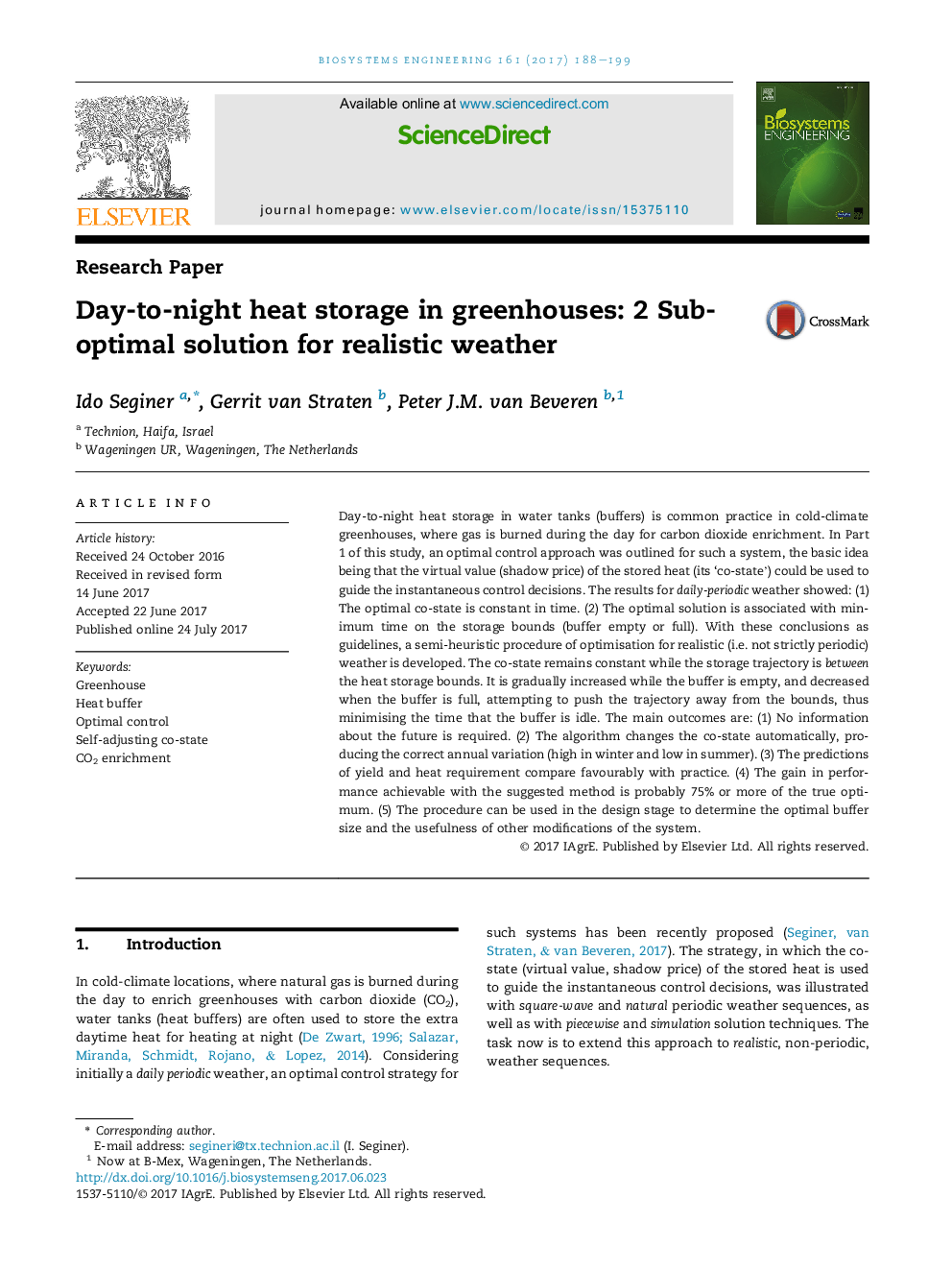| کد مقاله | کد نشریه | سال انتشار | مقاله انگلیسی | نسخه تمام متن |
|---|---|---|---|---|
| 5471804 | 1519500 | 2017 | 12 صفحه PDF | دانلود رایگان |
- A heuristic control method for day-to-night heat storage in greenhouses is examined.
- The method focuses on the virtual value (co-state) of the stored heat.
- No knowledge of future weather and prices is required.
- The co-state adjusts automatically to the unfolding weather and seasons.
- Predictions of yield and heat-use compare favourably with Dutch practice.
Day-to-night heat storage in water tanks (buffers) is common practice in cold-climate greenhouses, where gas is burned during the day for carbon dioxide enrichment. In Part 1 of this study, an optimal control approach was outlined for such a system, the basic idea being that the virtual value (shadow price) of the stored heat (its 'co-state') could be used to guide the instantaneous control decisions. The results for daily-periodic weather showed: (1) The optimal co-state is constant in time. (2) The optimal solution is associated with minimum time on the storage bounds (buffer empty or full). With these conclusions as guidelines, a semi-heuristic procedure of optimisation for realistic (i.e. not strictly periodic) weather is developed. The co-state remains constant while the storage trajectory is between the heat storage bounds. It is gradually increased while the buffer is empty, and decreased when the buffer is full, attempting to push the trajectory away from the bounds, thus minimising the time that the buffer is idle. The main outcomes are: (1) No information about the future is required. (2) The algorithm changes the co-state automatically, producing the correct annual variation (high in winter and low in summer). (3) The predictions of yield and heat requirement compare favourably with practice. (4) The gain in performance achievable with the suggested method is probably 75% or more of the true optimum. (5) The procedure can be used in the design stage to determine the optimal buffer size and the usefulness of other modifications of the system.
Journal: Biosystems Engineering - Volume 161, September 2017, Pages 188-199
